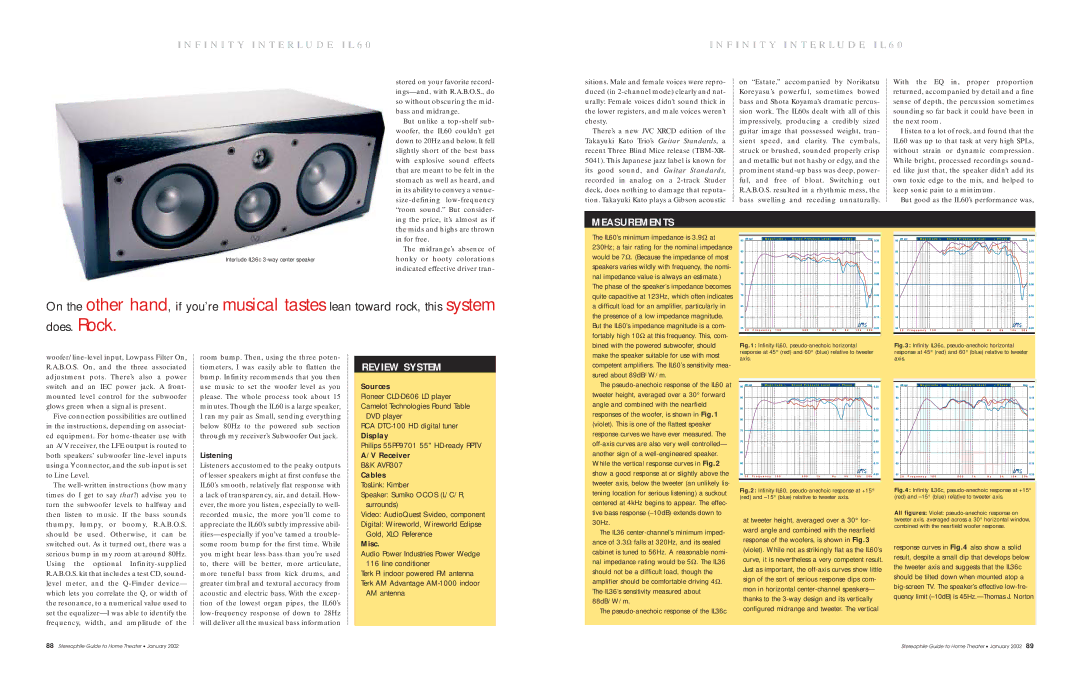IL60 specifications
The Infinity IL60 is a speaker system that sets the standard for high-quality audio performance in the realm of home entertainment. Renowned for its sleek design and advanced technology, the IL60 aims to provide an immersive listening experience that appeals to audiophiles and casual listeners alike.One of the standout features of the Infinity IL60 is its impressive sound quality. It employs a sophisticated two-way speaker design that incorporates a high-performance woofer and tweeter. The woofer is tuned to produce deep, rich bass, while the tweeter ensures crystal-clear highs. This combination allows for a balanced frequency response, giving users a full spectrum of sound that enhances music, movies, and gaming.
The cabinet design of the IL60 is equally noteworthy. Constructed from high-density MDF, the enclosure minimizes unwanted vibrations and resonances that can color sound. The internal bracing enhances the structural integrity of the speakers, ensuring that they perform optimally even at high volume levels. Additionally, the sleek finish and modern aesthetics make them a stylish addition to any home décor.
Infinity’s proprietary technologies play a crucial role in the performance of the IL60. The speakers feature a custom-engineered frequency response that enables them to reproduce sound accurately across various genres. The use of advanced crossover networks further ensures that frequencies are directed to the appropriate drivers, contributing to a cohesive and dynamic listening experience.
Moreover, the IL60 is designed for versatility, easily fitting into different types of audio setups. Whether you are looking to enhance your home theater system or enjoy audiophile-grade music playback, these speakers can accommodate various configurations, including stereo pairings or multi-channel systems.
Another notable characteristic of the Infinity IL60 is its efficiency. The speakers have a high sensitivity rating, which means they can produce loud volumes with minimal power input. This feature is especially beneficial for those who wish to drive the speakers with both traditional amplifiers and modern AV receivers.
In summary, the Infinity IL60 stands out as a remarkable speaker system that combines elegant design with cutting-edge technology. With its excellent sound reproduction, robust cabinet construction, proprietary advancements, and versatility, the IL60 provides an exceptional audio experience that caters to a wide range of preferences and applications. Whether for home theater, music listening, or gaming, the IL60 is an excellent choice for anyone seeking top-notch sound quality.

